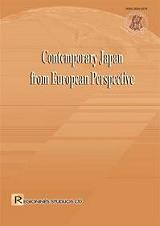Japanese Society as Wrapping and Amae Culture: Is There any Difference that Makes Difference?
Japanese Society as Wrapping and Amae Culture: Is There any Difference that Makes Difference?
Author(s): Vitalij MilkovSubject(s): Essay|Book Review |Scientific Life
Published by: Vytauto Didžiojo Universitetas
Keywords: image; wrapping; amae; cultural difference; integrity; dependence; įvaizdis; vyniojimo kultūra; amae; kultūrinis skirtumas; integralumas; priklausomybė
Summary/Abstract: The main purpose of this paper is to present Japanese culture and its image as unique, and treat these unique features as highlighting some common or universal characteristics and contributing to better understanding of any given culture. Japanese culture is often described as unique and completely different from any other countries, but what is the main difference that makes Japanese culture and their people different from others? And if there is or was such a difference, what function does it perform? Therefore, I would like to present Japanese culture as “unique”, basing my arguments mostly on Joy Hendry’s book Wrapping Culture, in which the author begins her analysis from such a simple and everyday phenomenon as the wrapping of presents and notes that “wrapping” itself understood both literally and metaphorically might be one of the main underlying principles or the key to understanding Japanese society. Also, I want to relate this “wrapping principle” with another underlying principle of Japanese society, which is presented in the concept of amae by Japanese famous psychiatrist Takeo Doi, who also uses this term as “a key concept” to understanding the Japanese character and behavior. Finally, I would like to use these concepts or principles not only for understanding Japanese society, but also apply them to the understanding the problems related to Japanese image and identity. Šiame straipsnyje japonų kultūra ir jos įvaizdis pristatomi kaip unikalūs, tačiau šis išskirtinumas tik dar labiau išryškina universalias žmonių ir kultūrų savybes, o tai leidžia geriau suvokti kiekvieną konkrečią kultūrą. Japonų kultūra dažnai laikoma unikalia ir visiškai skirtinga nuo kitų kultūrų, tačiau kuo pasireiškia šis unikalumas ir išskirtinumas? Straipsnyje mėginama atskleisti japonų kultūros išskirtinumą, grindžiant teiginius Joy Hendry knyga Vyniojimo kultūra (angl. Wrapping Culture), kurios autorė pradeda japonų kultūros analizę nuo tokio kasdienio japonų gyvenime dalyko, kaip dovanų vyniojimas, ir teigia, kad vyniojimas ir tiesiogine, ir perkeltine prasme gali būti laikomas raktu į japonų kultūros suvokimą. Vyniojimo principas siejamas ir su dar vienu Japonijos visuomenės išskirtinumą paaiškinančiu principu, išreiškiamu sąvoka amae (liet. priklausomybė), pirmą kartą pavartota garsaus japonų psichiatro Takeo Doi. Jis terminą amae laiko ir „raktu“, leidžiančiu geriau suprasti japonų būdo ir elgsenos bruožus. Remiantis šiomis sąvokomis ir principais, bandoma geriau suvokti ne tik japonų visuomenę ir kultūrą, bet ir pritaikyti šias sąvokas japonų įvaizdžio ir tapatybės tyrimams.
Journal: Regioninės studijos
- Issue Year: 2009
- Issue No: 3
- Page Range: 141-150
- Page Count: 10
- Language: English

